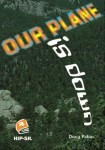SUMMARIZING
A “high-yield” instructional strategy
Summarizing is a pretty demanding cognitive task for readers at all levels. They have to take what they read and decide what information to keep, what to discard, what to combine and what to substitute. It takes a lot of instruction and practice for our students to be able to write good summaries, but it’s worth taking the time. In fact, Robert Marzano has identified summarizing as one of the nine most effective instructional strategies across content areas and grade levels.

Here are seven tips for summarizing text:
1. Make sure to include all information that is important.
2. Leave out information that might be interesting, but not important (extra supporting details or description).
3. Put the details in the same order in which they appear in the text.
4. Don’t repeat information, even if it’s repeated in the text.
5. Use key vocabulary from the text when you can.
6. Combine ideas or events that go together.
7. Use category words instead of lists of words (e.g. vegetables instead of carrots, beans and corn).


